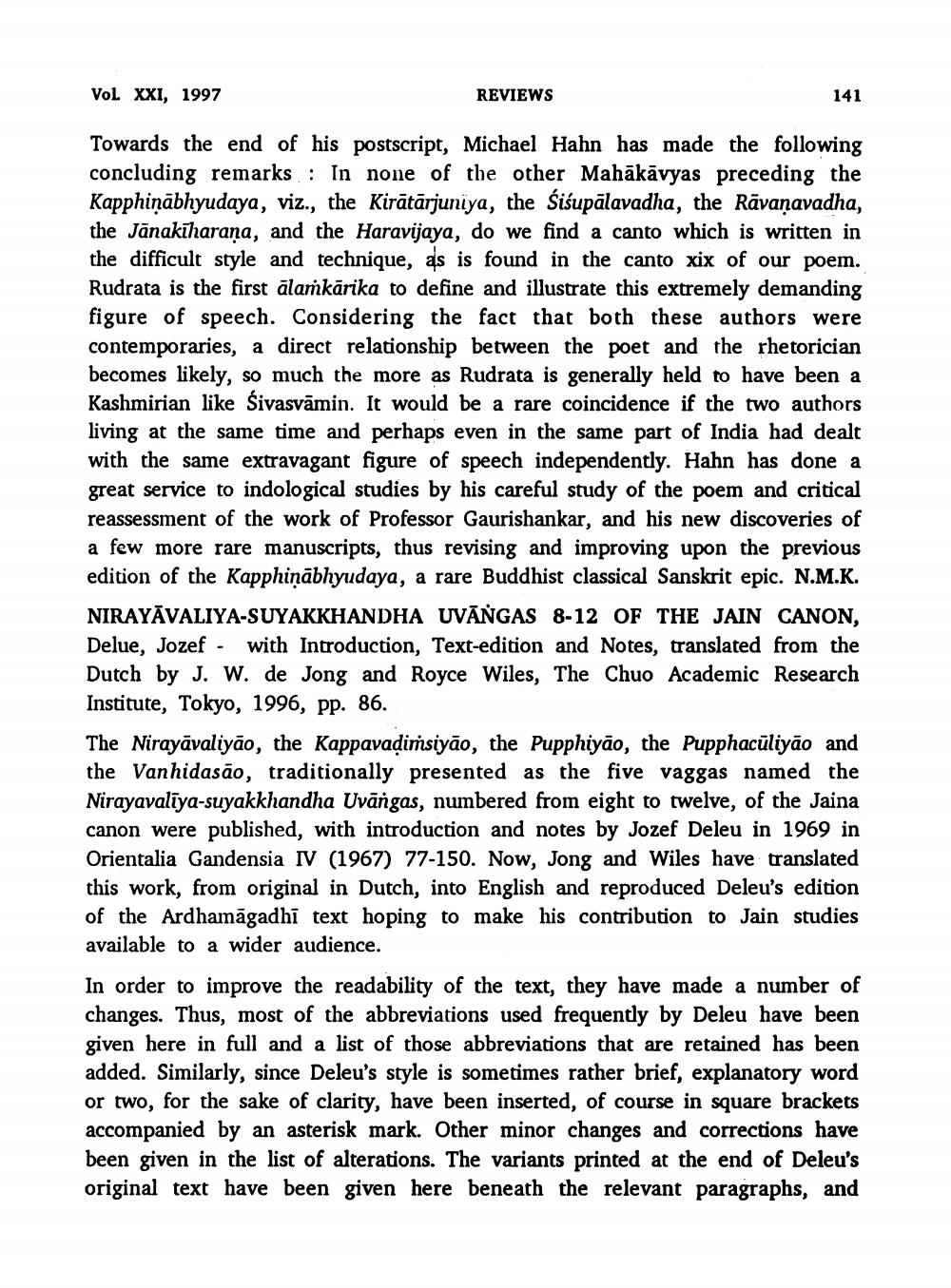________________
VOL. XXI, 1997
REVIEWS
141
Towards the end of his postscript, Michael Hahn has made the following concluding remarks: In none of the other Mahākāvyas preceding the Kapphiņābhyudaya, viz., the Kirātārjuniya, the śiśupālavadha, the Rāvaṇavadha, the Janakīharana, and the Haravijaya, do we find a canto which is written in the difficult style and technique, as is found in the canto xix of our poem. Rudrata is the first ālamkārika to define and illustrate this extremely demanding figure of speech. Considering the fact that both these authors were contemporaries, a direct relationship between the poet and the rhetorician becomes likely, so much the more as Rudrata is generally held to have been a Kashmirian like Sivasvāmin. It would be a rare coincidence if the two authors living at the same time and perhaps even in the same part of India had dealt with the same extravagant figure of speech independently. Hahn has done a great service to indological studies by his careful study of the poem and critical reassessment of the work of Professor Gaurishankar, and his new discoveries of a few more rare manuscripts, thus revising and improving upon the previous edition of the Kapphiņābhyudaya, a rare Buddhist classical Sanskrit epic. N.M.K. NIRAYĀVALIYA-SUYAKKHANDHA UVĀNGAS 8-12 OF THE JAIN CANON. Delue, Jozef - with Introduction, Text-edition and Notes, translated from the Dutch by J. W. de Jong and Royce Wiles, The Chuo Academic Research Institute, Tokyo, 1996, pp. 86. The Nirayāvaliyão, the Kappavadissiyão, the Pupphiyão, the Pupphacūliyāo and the Vanhidasão, traditionally presented as the five vaggas named the Nirayavalīya-suyakkhandha Uvāngas, numbered from eight to twelve, of the Jaina canon were published, with introduction and notes by Jozef Deleu in 1969 Orientalia Gandensia IV (1967) 77-150. Now, Jong and Wiles have translated this work, from original in Dutch, into English and reproduced Deleu's edition of the Ardhamāgadhi text hoping to make his contribution to Jain studies available to a wider audience.
In order to improve the readability of the text, they have made a number of changes. Thus, most of the abbreviations used frequently by Deleu have been given here in full and a list of those abbreviations that are retained has been added. Similarly, since Deleu's style is sometimes rather brief, explanatory word or two, for the sake of clarity, have been inserted, of course in square brackets accompanied by an asterisk mark. Other minor changes and corrections have been given in the list of alterations. The variants printed at the end of Deleu's original text have been given here beneath the relevant paragraphs, and




